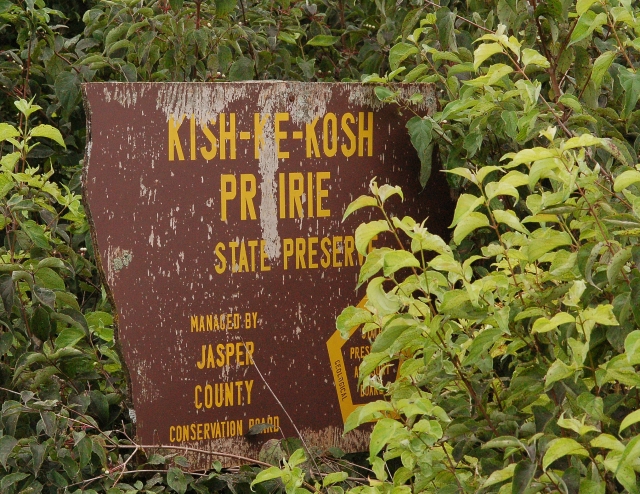




Kishkekosh
 Monroe County Iowa was named Kishkeekosh County
when it was first formed. The county was legally laid out by the
Iowa territorial legislature in 1843 before the treaty ceeding the lands
form the Sac and Fox tribes was ratified by Congress. The county
was renamed to Monroe in 1846. The reason given in some of the old
history books is that the earlier settlers had a problem pronouncing the
name. It seems strange that Appanoose, Keokuk, Wapello, and
Poweshiek did not present the same problems.
Monroe County Iowa was named Kishkeekosh County
when it was first formed. The county was legally laid out by the
Iowa territorial legislature in 1843 before the treaty ceeding the lands
form the Sac and Fox tribes was ratified by Congress. The county
was renamed to Monroe in 1846. The reason given in some of the old
history books is that the earlier settlers had a problem pronouncing the
name. It seems strange that Appanoose, Keokuk, Wapello, and
Poweshiek did not present the same problems.The histories of Iowa, as told by a number of the "Old Settlers" many years after the events do have some accounts of Kishkekosh.
Some accounts say he was a minor chief, and some say he was not a chief, but an important brave. He seems to have been the leader of a small village that was located near Poweshiek's.
In 1837 a number of Indians from Iowa accompanied the Indian Agent Joseph Street on a trip to Washington in an attempt to negotiate a peace treaty with Sioux Indians who had been involved in deadly battles with Poweshiek's tribe. Kishkekosh accompanied them on the trip. Although he ranked lower than most of the others on the trip, he made quite an impression. During the negotiations, Kishkekosh made an obvious display of the buffalo headdress that is shown in this painting. The government negotiators did not know it at the time, but the headdress is a symbol of power and prestige among the Sioux. It had been the property of a distinguished Sioux chief, and Kishkekosh had killed the owner and taken the headdress as a battle trophy.
Kishkekosh seemed to have interacted quite regularly with the early white settlers, and was on friendly terms with them. Some may have been more than a little intimidated by his visits, however. He did attempt to learn the white customs, particularly in the area of table manners. He also took to heart criticism that held that Indian women did all the work while the men were lazy, and got the men of his villiage to participate in what was traditionally women's work. The criticism may or may not have been valid, but it was often repeated in the writings of the settlers. With increasing reliance on annuities some of the traditional male roles may have been changing. What is usually not noted, however, is that the Indian women certainly had more say in the politics of their villages than the female white settlers did in theirs.
What may have been the last record of Kishkekosh was recorded in The History of Jasper County as follows:
"The Indians, who had reserved a strip off the west side of Jasper County, prepared to remove late in the Fall of 1845. Kishkekosh and his braves, about twenty in all, had stored their heavy articles at Red Rock during the summer, not needing them while engaged in hunting. Prior to starting west, they repaired to Red Rock and hired Mr. Mikesell to haul the goods to their camp. That night they camped where Monroe now stands. The weather was cold, and a heavy snow fell during the night. The Indians huddled together as close as they could to keep warm, and on openitn out in the morning a perfect cloud of steam arose. Part of Mikesell's oxen went astray during the night, and he followed them clear home, the snow falling fast. On returning, he found the Indians all bewildered as to the direction they should take, and it took the chief some time to ascertain the course, when the journey was resumed and the village reached that night.
Pasishamone and his band also frequented the Skunk in this county, and at the time of the removal of Kishkekosh. the former, with about half of his braves, was at Agency City on a visit. The women, children and old men went into camp four miles from Fort Des Moines to await their return, which was at the beginning of winter, when the band packed up and followed Kishkekosh and his followers."
There is no longer a Kishkekosh County in Iowa, but there is a state preserve called Kishkekosh Prairie.

What about those other counties?
What city was named after George King?
Who walked half-way around the world and ate his shoes to survive?
Did the poet really discover the butterfly?